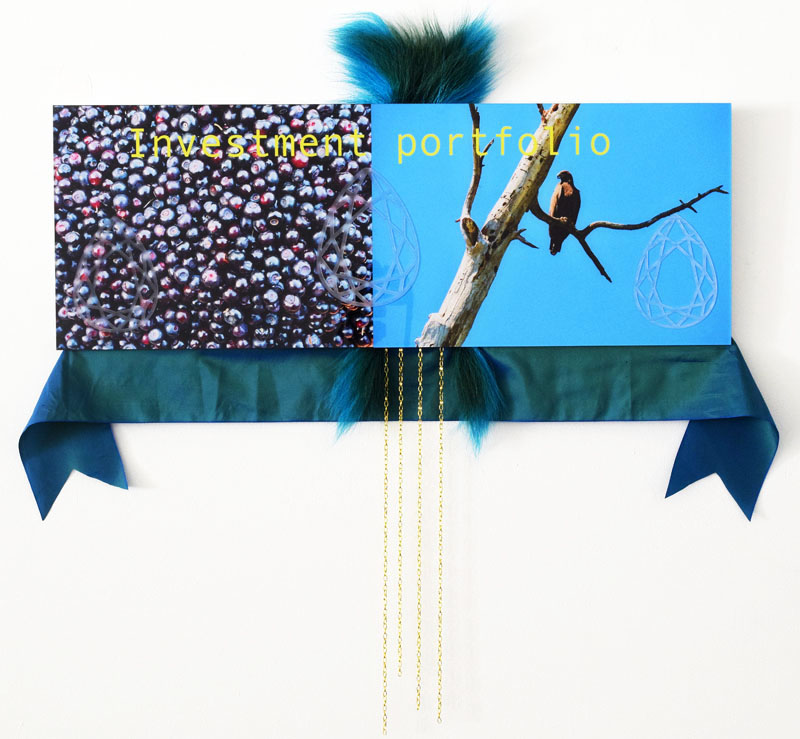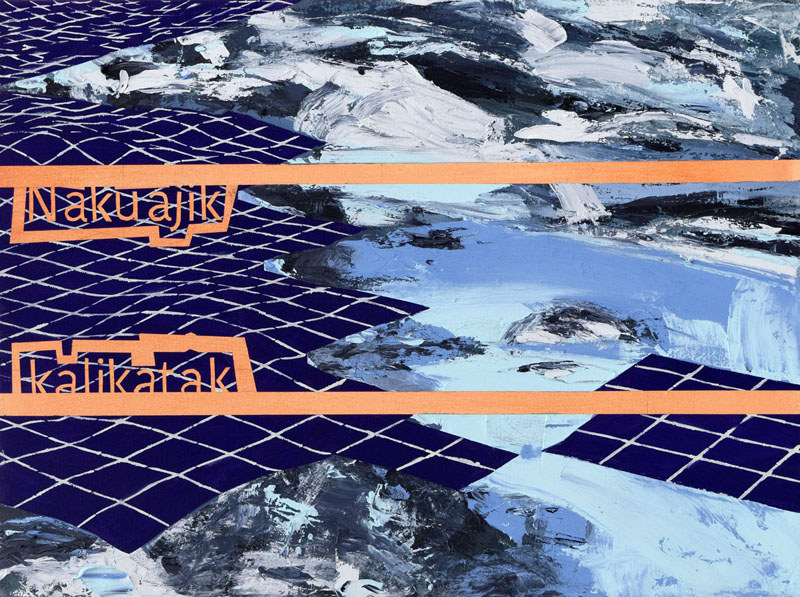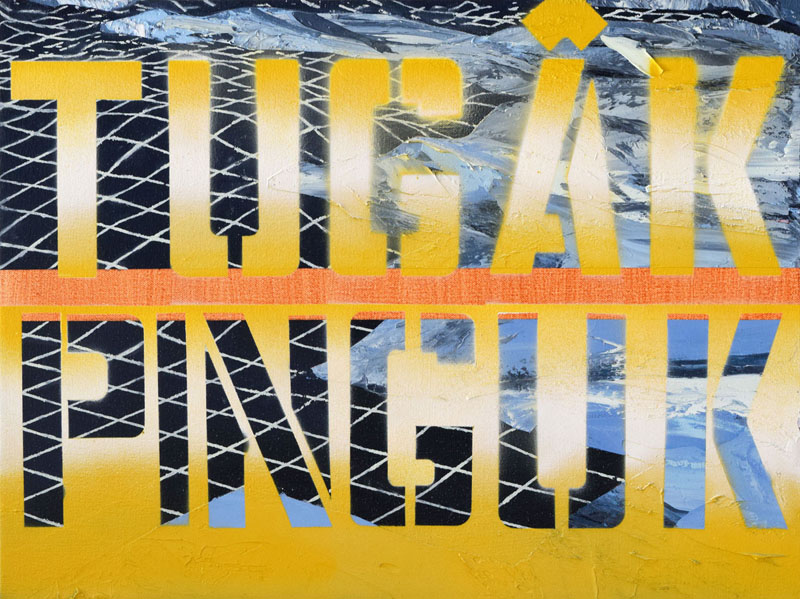Topography Typography: Mark Igloliorte & Tania Willard
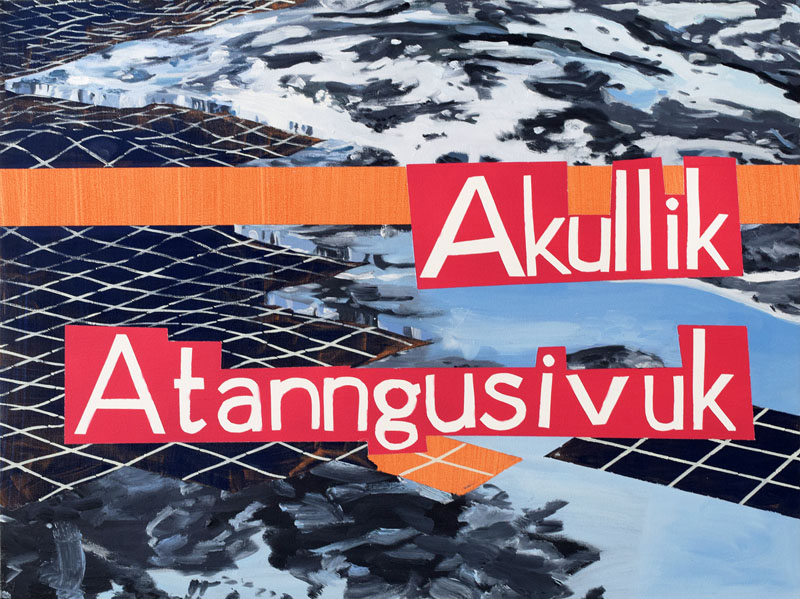
Marion Scott Gallery is pleased to present Topography Typography, a two-person exhibition that pairs the work of Tania Willard and Mark Igloliorte, two contemporary Indigenous artists whose practices address a range of related issues from two differing perspectives. Working independently of each other, Igloliorte and Willard have created parallel bodies of work that speak in markedly different ways to their personal experiences of, and relationships to, their respective traditional lands. Both artists enlist the superimposition of text over landscape imagery and make choices of distinct typefaces and palette, creating works that speak not only to their own culturally informed experiences of their lands but also to the diverse economies that exist in tension with, or in opposition to, those experiences.
Tania Willard uses photographs of food and medicinal organics collected from her land in Secwepemc, juxtaposing images of the organics as they are found in nature with those that have been harvested by various means. Some of the items pictured are ones that are employed in acts of art making, an activity Willard regards as her own way of making an investment in the land. The photos are transmounted onto plexiglass panels that have been etched with motifs resembling cut gem stones—another image of the bounty of the land entering an economic market. The works are further embellished with various materials referencing market economies that are likewise tied to the land: gold, fur, textiles, woven bark baskets. That the materials are imitation versions of goods associated with luxury invites the question of what is valuable and what is not. Willard’s word play is a key component of her layered expression, foregrounding the critical intent behind the richly visual images.
Mark Igloliorte’s oil works on canvas are comprised of text stenciled and painted over representations of a digital map in the process of being rendered. The idea for these images evolved out of the artist’s experience of using an electronic table to view a map that was slow to load, revealing the graphic wire framework on which the photographs of the landscape are placed in order to create a three-dimensional map. Igloliorte’s maps are of remote areas where the artist has gone hunting with family members in Nunatsiavut. It was on these hunting trips that Igloliorte first began acquiring some of the Inuktitut words that appear as text superimposed over the painted landscape.
In addition to invoking the hunting and gathering economy that lies at the origin of this work, Igloliorte’s colourful images raise questions similar to those found in Willard’s works. This questioning has to do with the way in which the paintings make the land’s contoured surface the focus of the viewer’s attention, leaving us to guess at what might lie underneath. Igloliorte sees this aspect of his work as a comment on the fact that while Inuit people across the North may enjoy certain surface rights to their land, they are denied ownership of the mineral and geological wealth below, whose rewards are financially far more valuable in the wider market economy. Whatever might be below is as inaccessible to Inuit as it is to the viewer of the paintings.
In recent years, Willard’s work has evolved into something that she says is much more of a collaboration with the land and with her family on that land, a conception of her practice that is at its most explicit in her ongoing Bush Gallery project. Willard speaks about the situatedness inherent in that work. We might also see in this something of a fundamental parallel with Igloliorte’s work, which is similarly the result of a self-conscious and evolving situatedness within traditions on the land on the one hand, and in relation to the market economies that have been imposed on those traditions on the other hand.
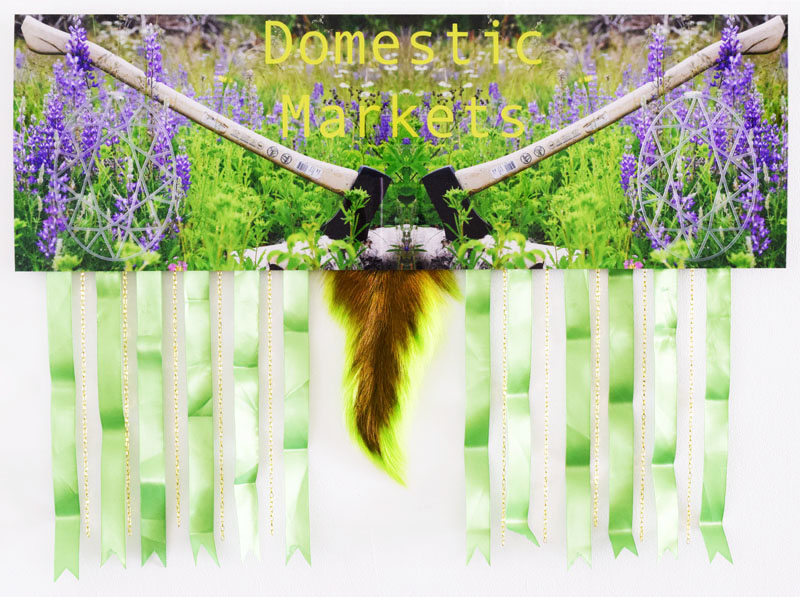
Tania Willard
Domestic Markets, 2020, archival print, plexiglas, dyed white tailed deer tail, ribbon & chain, 23.5 x 32 in.
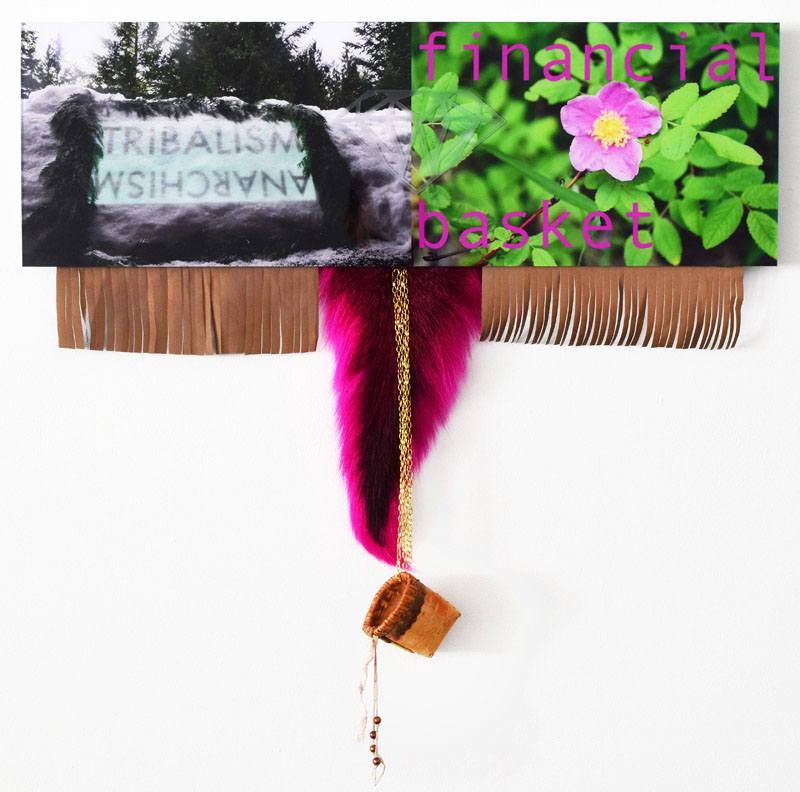
Tania Willard
financial basket, 2020, archival print, plexiglas, dyed white tailed deer tail, reflective material, chain, beads & cedar bark basket, 28 x 28 in.
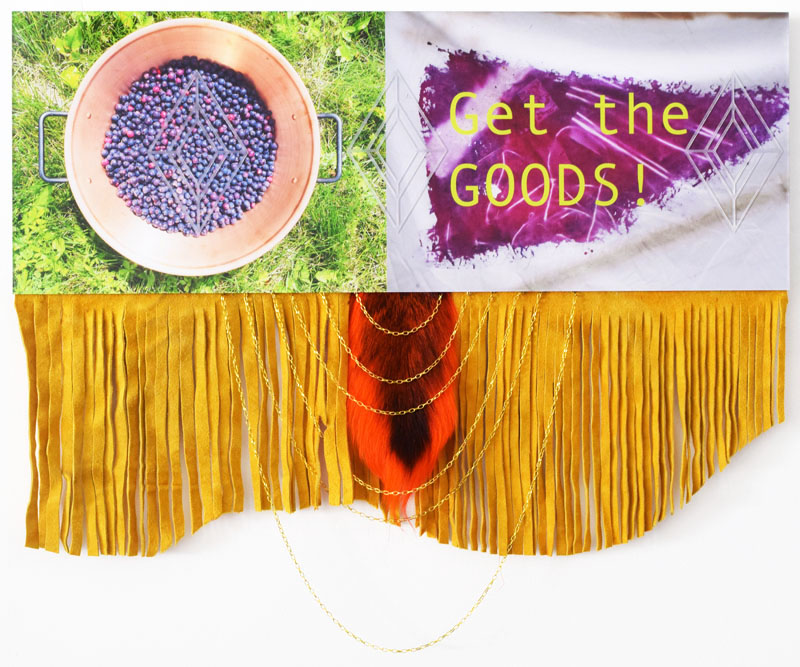
Tania Willard
Get the GOODS !, 2020 archival print, plexiglas, dyed white tailed deer tail, reflective material, chain & leather, 26.5 x 32 in.
